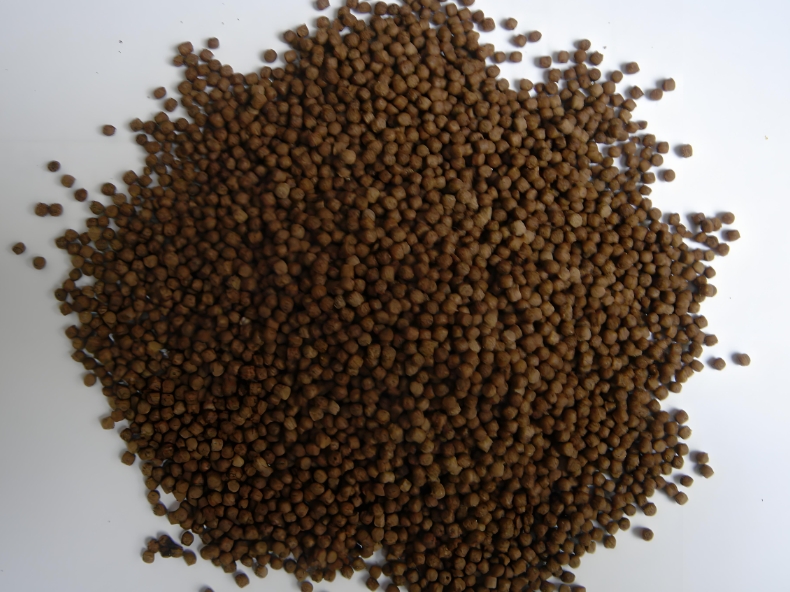Consideraciones clave al comprar una extrusora de alimentos para peces a pequeña escala
Investing in a small-scale fish food extruder is a significant step for aquaculture hobbyists, small-scale farmers, and aspiring pet food entrepreneurs. It offers control over ingredients, nutrition, and production costs. However, choosing the right machine requires careful evaluation. Here are the critical factors to consider before making a purchase.
1. Define Your Production Needs and Goals
This is the most crucial first step. Your specific needs will dictate the type of machine you require.
- Target Output (Capacity): Estimate how much feed you need to produce per hour (e.g., 50 kg/hr, 100 kg/hr). Small-scale machines can range from 20 kg/hr to 500 kg/hr. Don’t over-invest in a high-capacity machine you won’t fully utilize, as it will have higher costs for power and operation.
- Feed Type and Formulation: What kind of feed will you make?
- Floating vs. Sinking: Can the machine produce both? This is controlled by the extruder’s ability to manage temperature, pressure, and moisture. A versatile machine will allow you to adjust these parameters.
- Pellet Size: What species are you targeting? Feed for tiny tropical fish requires a die with very small holes (e.g., 0.5mm-1.0mm), while feed for larger species like koi or small farmed fish requires larger dies (e.g., 2.0mm-5.0mm). Ensure the supplier offers a variety of die sizes.
- Ingredient Composition: High-fat or high-moisture recipes can be more challenging to process. Discuss your intended formula with the supplier to ensure the machine can handle it.
2. Machine Functionality and Features
- Extrusion Process: Understand the type of extruder.
- Dry vs. Wet Extrusion: Many small-scale machines are single-screw dry extruders. They rely on friction and mechanical energy to generate heat, often requiring less external steam and water. They are simpler but may offer less control over the final product’s density.
- Control de temperatura: Precise control over barrel temperature is vital for determining whether pellets float or sink. Look for machines with adjustable heating/cooling systems.
- Motor Power: The power of the drive motor (measured in kW or HP) determines the machine’s capacity and ability to process tough ingredients. A more powerful motor can handle higher loads and tougher mixes but will consume more electricity.
- Construction and Materials: The machine must be durable and safe for producing food.
- Contact Parts Material: All parts that touch the feedstock (screw, barrel, die) should be made from high-grade, food-grade stainless steel (e.g., 304 or 316). This prevents corrosion, ensures product safety, and simplifies cleaning.
- Ease of Use and Control: Small-scale operations may not have a dedicated engineer.
- Automation: Look for user-friendly control panels (PLC touchscreens are ideal) that allow you to save settings for different recipes. This ensures consistency between batches.
- Adjustability: Key parameters like feed rate, water injection rate, and cutter speed should be easy to adjust to fine-tune the pellet size and texture.
3. Support and Operational Factors
- Supplier Reputation and Support: This cannot be overstated. Choose a reputable manufacturer known for quality machinery.
- Asistencia técnica: Is help available if you encounter a problem? What is the warranty? Reliable after-sales service is critical.
- Training and Manuals: Does the supplier provide clear operational manuals and video guides? Will they offer initial setup training?
- Disponibilidad de piezas de repuesto: The screw, die, and cutter are wear parts that will eventually need replacement. Ensure these parts are readily available from the supplier at a reasonable cost. Ask about the expected lifespan of these components.
- Ancillary Equipment: An extruder is not a standalone system. To create a complete production line, you will likely need:
- Grinder/Hammer Mill: To pulverize raw materials into a fine powder.
- Mixer: To thoroughly blend powders, oils, and liquids before extrusion.
- Dryer/Cooler: Freshly extruded pellets are moist and soft and must be dried to a shelf-stable moisture level (~10%).
- Oil Coater: To add heat-sensitive lipids and vitamins after the drying stage.
Consider your space and budget for this additional equipment.
4. Cost Analysis
Look beyond the initial purchase price.
- Total Investment: Factor in the cost of ancillary equipment, installation, and spare parts.
- Operational Costs: Calculate the electricity consumption of the extruder and dryer. Estimate the cost of maintenance and wear parts.
- Retorno de la inversión (ROI): How long will it take to recoup your investment based on your projected savings from making, rather than buying, feed? For a business, calculate based on potential sales revenue.
Conclusion: A Balanced Decision
Purchasing a fish food extruder is a balance between your production requirements, budget, and technical capability. Prioritize a machine built from quality materials (stainless steel) that offers the flexibility to produce your desired feed type (floating/sinking, various sizes). Most importantly, choose a supplier with a strong reputation for reliability and customer support. By carefully considering these points, you can make an informed investment that will provide high-quality, customized feed for years to come.








